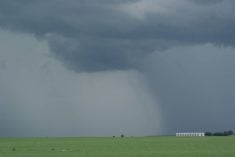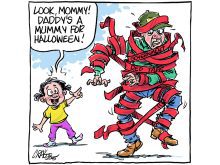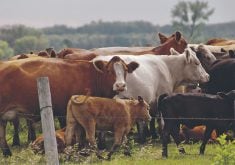MAY 16 was Canadian census day and here’s a fearless prediction about the snapshot that will emerge of Canada’s farm community: Statistics Canada will report that while there are more than 200,000 farmers in Canada, the number has fallen dramatically since the 2001 census, perhaps by 10 percent or more.
Farm lobbyists will lament the hollowing out of rural Canada, point to the declining number as proof positive that predictions of farmer exodus are real and demand a government response.
The government, if history is a guide (and it may not be with the Conservatives in the saddle) will design policies that try to cater to the needs of Canada’s 200,000-plus farmers.
Read Also

Farmer ownership cannot be seen as a guarantee for success
It’s a powerful movement when people band together to form co-ops and credit unions, but member ownership is no guarantee of success.
But the basis for that assessment is a lie.
Policy and programs that try to cater to the interests of more than 200,000 Canadian farmers will be hopelessly misguided.
Despite collective claims of farm lobby groups that they represent more than 300,000 farmers – Canadian Federation of Agriculture claims 200,000, Grain Growers of Canada claims 90,000, Canadian Cattlemen’s Association claims tens of thousands more – there aren’t that many farmers around.
It’s a question of definition and it affects the public and political perception of what “farmers” think.
Let’s start with the census that will produce the 200,000-plus farmer total.
There is no criterion. It is self-definition.
In the long census form, the Step D question is the following: “Is anyone listed in Step B (the recitation of residents) a farm operator who produces at least one agricultural product intended for sale?”
If the answer is “yes,” there is the clincher: “Does this farm operator make the day-to-day management decisions related to the farm?”
If yes, presto, you are a farmer.
By that definition, I could qualify. On my Gatineau Valley 113-year-old family farm, a cattle producer neighbour harvests hay or alfalfa for his herd and if I charged him, I could be a farmer.
It is bizarre. Agricultural policy should be designed for people attempting to make a living in the business, or at least people running a commercial operation, rather than for someone who produces one commodity “intended for sale.”
The lack of credible commercial definition of a farmer distorts the public perception of farmers – a survey of commercial farmers would not produce the average farm income number that is regularly reported – and distorts reporting on what “farmers” think. It is one reason the Conservatives resist a farmer plebiscite on the Canadian Wheat Board monopoly. Who is a farmer with the right to vote?
Is it every permit book holder, including the Saskatoon doctor with the family quarter section who is happy to have the board do her marketing, or is it the full-time farmer with 5,000 acres of wheat and a harvest large enough to justify exploring some marketing options?
The CWB producer survey reported that most farmers of all sizes thought each permit holder should have an equal vote, but one can surmise that the bigger the operation, the more important marketing factors are.
This is not an attack on Statistics Canada, a marvelous statistics collector that provides an invaluable service.
It is a plea for a sensible definition of a farmer so policy decisions can be directed at helping those who are.














